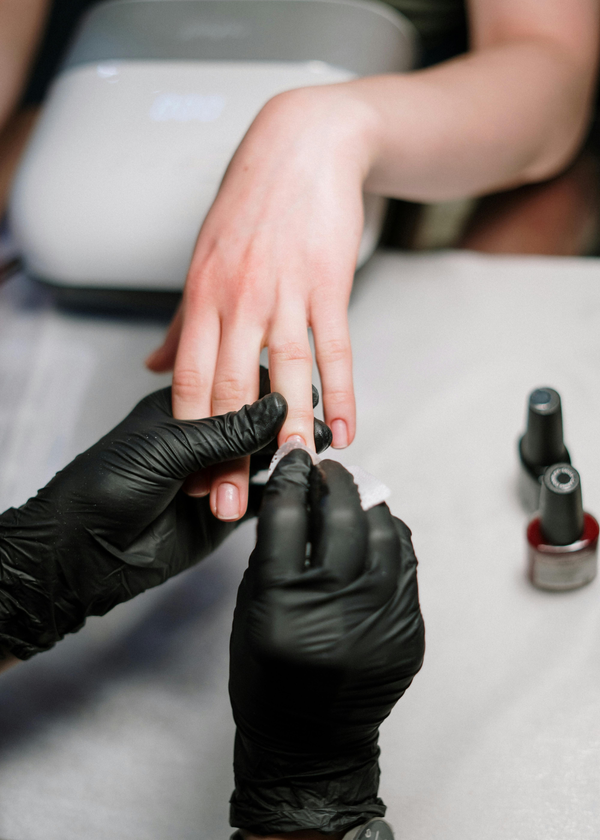In a world where drug tests have become an increasingly common requirement for employment, probation, or athletic competitions, the concern about whether certain substances might lead to a positive result is entirely justified.
One substance that has raised questions in this regard is blue lotus. Known for its beautiful flowers and potential medicinal properties, blue lotus is a water lily with a rich history of use in various cultures.
But does it show up on a drug test? In this article, we will delve into the world of blue lotus, explore its history, uses, and potential effects on drug tests.
A Brief Introduction to Blue Lotus
Blue lotus, scientifically known as Nymphaea caerulea, is a water lily that is native to parts of Southeast Asia and the Nile River in Egypt.
This aquatic plant has gained attention for its stunning blue and white flowers, which have been used in cultural and religious practices for centuries.
Blue lotus has a rich history in various ancient civilizations, including the Egyptians and the Mayans.
Ancient Egyptians revered the blue lotus for its symbolic and psychoactive properties.
They used it in religious ceremonies and believed it had spiritual significance. In contemporary times, blue lotus is still used as an herbal supplement, and there are claims that it offers various potential benefits.
The Various Forms of Blue Lotus
Blue lotus is available in different forms, each with its unique characteristics and uses. These forms include:
- Dried Flowers: The dried petals of the blue lotus flower are often used to make tea or smokeable blends. Tea made from the dried petals is said to induce a mild euphoric and relaxing effect.
- Extracts: Blue lotus extracts are more concentrated versions of the plant's active compounds. These are often available in liquid or tincture forms and are used for their potential psychoactive effects.
- Capsules and Supplements: Blue lotus is also available in capsule form, making it convenient for those who want to experience its effects without the taste of the flower.
- Resins: Blue lotus resins are highly concentrated and are used in various herbal preparations. They are believed to offer potent effects.
The Key Compounds in Blue Lotus
The potential psychoactive effects of blue lotus are attributed to the presence of several key compounds, including:
- Nuciferine: Nuciferine is an alkaloid found in blue lotus and is believed to have a calming effect. It is also thought to affect serotonin receptors in the brain, which could contribute to mood enhancement.
- Aporphine Alkaloids: Aporphine alkaloids are compounds that have been studied for their potential psychoactive effects. They may contribute to the mild euphoric sensations associated with blue lotus use.
- Phosphodiesterase Inhibitors: Some compounds in blue lotus are thought to inhibit phosphodiesterase enzymes, which can lead to increased blood flow and relaxation.
- Nymphaea Alkaloids: These alkaloids are specific to the Nymphaea genus and may contribute to the plant's psychoactive properties.
While these compounds have been the subject of research, it's important to note that studies on blue lotus are limited, and more research is needed to fully understand its effects on the human body.
The Legal Status of Blue Lotus
The legal status of blue lotus varies from country to country. In some places, it is considered a controlled substance, while in others, it is freely available as an herbal supplement.
This legal variation can lead to confusion and concern for individuals who use or are considering using blue lotus.
For example, in the United States, blue lotus is not explicitly regulated at the federal level.
However, it's essential to check the laws in your specific state or jurisdiction, as some have implemented their own restrictions on the sale and use of certain substances.
Before using blue lotus, it is advisable to research and understand the legal status in your area to avoid any legal consequences.
The legality of blue lotus can directly impact whether it can show up on a drug test.
How Drug Tests Work
Before we delve into whether blue lotus can show up on a drug test, it's crucial to understand how drug tests operate. Drug tests are designed to detect specific substances or their metabolites in the body.
The most common types of drug tests include urine, blood, hair, and saliva tests.
Urine tests are the most widely used because they are relatively non-invasive and can detect a broad range of substances.
When you provide a urine sample, it undergoes a series of tests to identify the presence of certain drugs or their metabolites.
These tests are highly sensitive and can detect even trace amounts of substances in your system.
In the case of blue lotus, the question is whether any of its compounds or metabolites could trigger a positive result on a drug test.
To answer this, we need to explore the specific compounds in blue lotus, their chemical structures, and the likelihood of cross-reactivity with common drug test panels.
Can Blue Lotus Show Up on a Drug Test?
The likelihood of blue lotus showing up on a drug test depends on several factors, including the type of test used, the specific compounds being tested for, and the individual's consumption of blue lotus. Let's break down these factors:
1. Type of Drug Test:
- Urine Test: As mentioned earlier, urine tests are the most common. These tests typically look for metabolites of specific drugs, such as THC (the primary psychoactive compound in cannabis) or cocaine. Blue lotus compounds, like nuciferine and aporphine alkaloids, are unlikely to cross-react with the standard markers on a urine drug test. Therefore, it is rare for blue lotus to produce a false positive on a urine test.
- Blood Test: Blood tests are more specific and less common. They are often used to detect recent drug use or intoxication. Blue lotus is unlikely to be a concern in a blood test because the compounds in the plant are not commonly tested for in routine blood screenings.
- Hair Test: Hair tests are sensitive and can detect drug use over an extended period. However, blue lotus is not typically included in the panels used for hair drug testing. It is unlikely to show up in this type of test.
- Saliva Test: Saliva tests are often used to detect recent drug use, such as impairment due to drug consumption. Blue lotus is also unlikely to show up on a saliva test because it is not a commonly screened substance.
2. Cross-Reactivity:
Cross-reactivity refers to the potential of a substance to trigger a positive result for another substance on a drug test.
For this to happen, the chemical structure of the substance in question must be similar to the target compound being tested for.
While some compounds in blue lotus may share similarities with certain controlled substances, they are not identical. As a result, the likelihood of cross-reactivity is low.
3. Individual Consumption:
The consumption of blue lotus also plays a crucial role in whether it might show up on a drug test. If an individual uses blue lotus infrequently and in moderation, the likelihood of it showing up on a drug test is extremely low.
However, heavy and frequent use could potentially lead to trace amounts of blue lotus compounds in the system, which might be detectable under certain circumstances.
Factors That Might Affect Drug Test Results
While blue lotus is unlikely to show up on standard drug tests, several factors can affect drug test results, potentially leading to false positives or false negatives.
It's important to be aware of these variables when considering whether a substance like blue lotus could influence the outcome of a drug test:
1. Laboratory Sensitivity: The sensitivity of the laboratory conducting the drug test can vary. Some labs have more advanced equipment and more stringent testing protocols, increasing the chance of detecting even trace amounts of substances.
2. Timing: The timing of the drug test concerning when the substance was consumed is crucial. Most drugs, including their metabolites, have specific windows of detection. For blue lotus, which is not commonly tested for, the timing becomes less of a concern.
3. Individual Metabolism: An individual's metabolism and how their body processes substances can also affect drug test results. Some people may eliminate substances from their system more rapidly than others.
4. Dosage and Frequency: If someone consumes a substantial amount of blue lotus on a frequent basis, there is a higher likelihood that it could lead to the presence of its compounds in their system. However, casual and moderate use is less likely to result in detectable levels.
5. Variability in Blue Lotus Products: The composition and quality of blue lotus products can vary from one source to another. Some may be more concentrated, while others may contain a lower quantity of active compounds. This variability can influence the likelihood of detection in a drug test.
Conclusion:
In conclusion, the likelihood of blue lotus showing up on a drug test is minimal. Standard drug tests, such as urine, blood, hair, and saliva tests, do not typically include blue lotus compounds in their panels.
Furthermore, the chemical structure of the compounds in blue lotus differs from those of commonly tested controlled substances, reducing the possibility of cross-reactivity.
However, it's essential to remain informed about the legal status of blue lotus in your area, as legal restrictions can vary.
Always use blue lotus in moderation, as excessive and frequent consumption may increase the likelihood of its compounds appearing in a drug test, although this is still highly unlikely.
As research on blue lotus is limited, it's challenging to provide definitive answers regarding its effects on drug tests.
To be safe, those who may undergo drug testing should consider avoiding or limiting their use of blue lotus until more comprehensive research is available.








